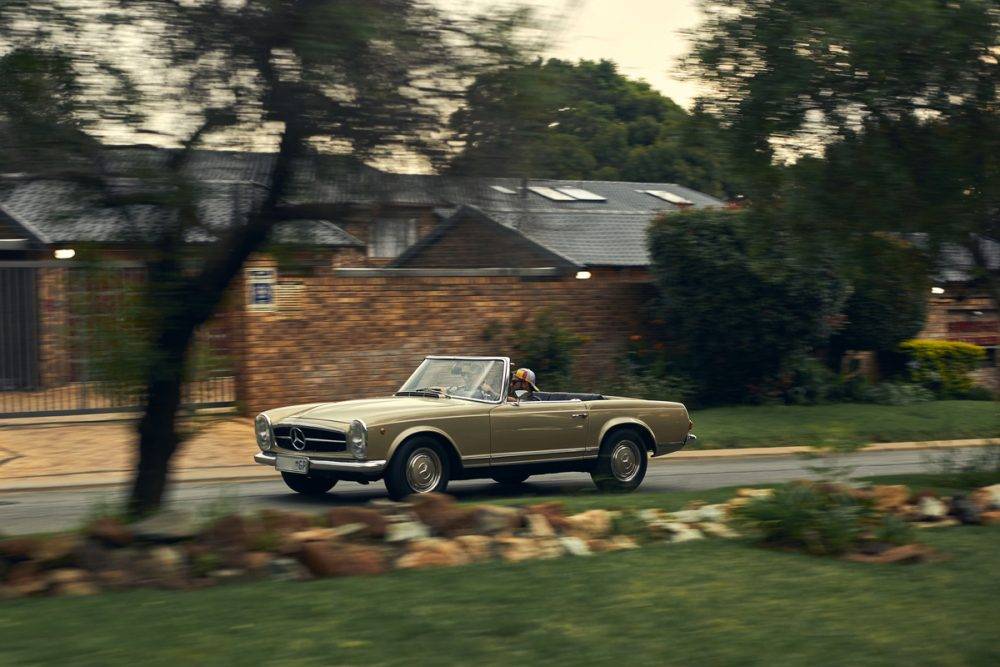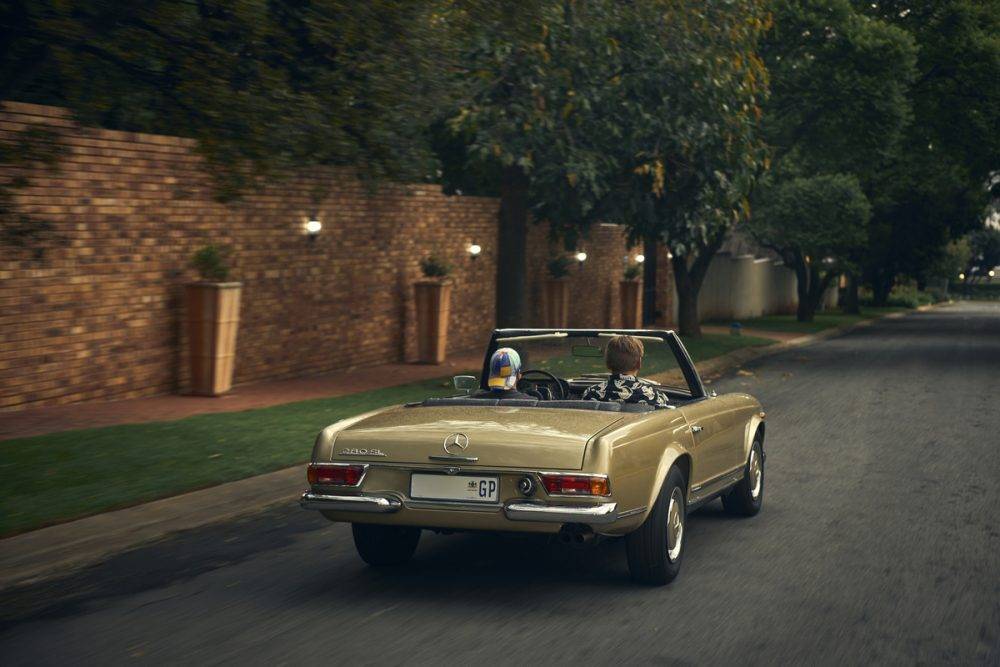Unique delight: The Mail & Guardian’s reviewer was lucky enough to spend time driving an immaculate 1968 Mercedes 280 SL which, despite its age, puts out a potent 125kW mated to a four-speed manual gearbox.
Mercedes is a brand that is often praised for its rich history and beautiful classics and the SL is at the top of collectors’ bucket lists.
The 300SL Gullwing is arguably the most sought-after Mercedes money can buy but there was a smaller SL that proved to be almost as gorgeous, and nearly as popular, as the Gullwing. Let me introduce you to the 280 SL.
To appreciate the SL nameplate, we must travel back to the 1950s when Mercedes decided to build a racing car.
The following year marked the birth of the 300 Super Light, which was later shortened to SL.
Rudy Uhlenhaut was the man in charge of the racing operation and it was he who developed the concoction of tubular aluminium and magnesium for the frame. It was so light, it weighed only 50kg.
With weight sorted, Mercedes needed a power unit that could keep up with the seasoned competition.
The engine in question was the 3.0-litre inline-6 from the 300 Adenauer Mercedes. This new engine delivered a healthy 127kW and proved to be exceptionally competent right out of the gate.
Merc saw results almost instantly, with a double win at the 24 Hours of Le Mans, four wins at the Nürburgring Anniversary Sports Car GP, three in the Prix de Berne, two at the Carrera Panamericana and a fourth and second place in the Mille Miglia.
It was a great start to the SL’s life, proving that Mercedes could create incredibly fast coupes. The only problem was that this Mercedes wasn’t a road-going vehicle and it was the next edition of the SL that blew people’s minds.
The second variation was the 300 SL Gullwing, which began its life at the New York Motor Show in 1954. It was widely considered the first supercar and was the fastest production car at the time of its launch.
The vehicle was spectacular to look at — but it was the doors that stole the show.
Unfortunately, the Gullwing didn’t last as long as it probably should have, as it was replaced with the SL Roadster in 1957.

The Roaster was an open-top version of the SL with the same 3.0-litre motor. It was an utterly beautiful machine and came with a small power increase.
This leads us to the subject of this feature, the 280 SL Pagoda. It was given this name because of the shape of the roof, which reminded people of East Asian temple structures.
This new generation of SL was beautiful in its simplicity of design and has continued to be one of the most iconic classics out there.
Yes, it isn’t as outright striking as the Gullwing, which set the bar about as high as it can go on styling, but it was a sleek and classy coupe with a detachable hardtop.
Mercedes stopped the 300 after its first generation and offered the SL with a smaller engine option, the 2.8‑litre inline-6 from the 280 SL.
Manufactured between 1967 and 1971, it was the biggest of three engine options for this generation, and I got to experience just what the craze in the 1960s was all about.
Finding a licenced left-hand drive car in South Africa is special in its own right, but being one of the lesser-known, yet important, iconic cars ever made makes it particularly memorable.
It takes a minute to get your head around the steering wheel location.
The seats are unbelievably comfortable. The supple springs absorb every bump as you gaze out over the elegantly decorated, wood-finished dashboard.
Everywhere you look, you notice high-quality materials and the craftsmanship here is superior to most modern interiors.

The 2.8-litre engine surprised me the most. I’ve driven my fair share of classics but the power this inline-6 has is almost overwhelming for a car of this age. It produces a potent 125kW mated to a 4-speed manual gearbox.
The vehicle sounds good too, and once it is warmed up, it rumbles like a classic race car, which you can’t help but smile at.
The attention you attract in a car with such a desirability factor is unlike anything I have experienced. As the car passes, everyone stops and stares and you can barely finish a trip without someone wanting to discuss the specifics. This was largely thanks to the excellent condition of this 1968 model.
You should start saving now if you want to own a classic Mercedes SL, as prices start at about R2 million in this country.
Even though this car was manufactured nearly 60 years ago, driving it is just as, if not more, rewarding than a modern sports car.
Spending time with a car like this rekindles one’s love for cars. It stands for the essence of driving itself — the rawness of an analogue sports car paired with the class and style of a bygone era.
It’s a driving experience that few will ever get to enjoy.